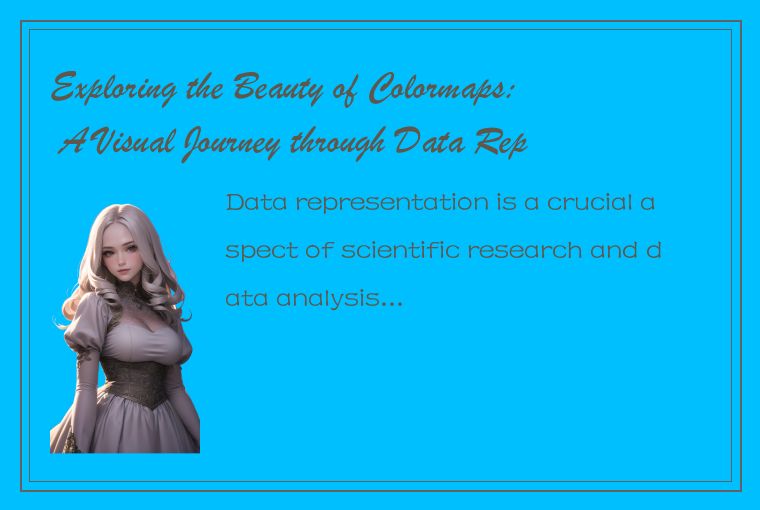Data representation is a crucial aspect of scientific research and data analysis. Colormaps are an essential tool used to visualize data, as they allow for the easy identification of patterns and trends within large datasets. A colormap is a technique that maps values from a defined range to a corresponding color, creating a visual representation of data. In this article, we will explore the beauty of colormaps and how they can be used to enhance data visualization.

The Importance of Colormaps
Colormaps are used to represent numerical data visually, which is particularly essential when exploring large datasets. They enhance the visual appeal and make data more understandable by displaying different values with distinct colors. Colormaps help to identify patterns and trends in color-coded data, making it easier to identify correlations, clusters, and areas of interest.
The Different Types of Colormaps
There are several types of colormaps that are commonly used in data representation. These include but are not limited to:
1. Sequential Colormaps - These colormaps represent data that has a continuous range of values. The colors are arranged in a distinct order, with each color representing a specific value within the range.
2. Diverging Colormaps - These colormaps represent data with a midpoint value where the colors diverge in different directions, indicating positive and negative deviations from the midpoint.
3. Cyclic Colormaps - These colormaps represent data that has a continuous range of values, but the colors are arranged in a circular fashion. Cyclic colormaps are useful in representing periodic data, such as time-series.
4. Qualitative Colormaps - These colormaps represent data that has non-numeric or categorical information. The colors are not arranged in a specific order but rather convey distinct categories with different colors.
Choosing the Right Colormap
Selecting the appropriate colormap can impact the readability and accuracy of the visual display. A suitable colormap should emphasize the data's essential features, and it should minimize errors or biases. Additionally, it should also be perceptually uniform, meaning that its color changes should reflect uniform changes in data values. Therefore, it is crucial to choose a colormap that best fits the data type and the viewer's perception.
Colormap Design
The design of colormaps can significantly impact the interpretation of the visualization. The wrong choice of colors can obscure patterns or distort data interpretation. Therefore, colormaps should be designed to align with the color spectrum while taking into account human color perception.
Some of the best colormap designs for data representation, such as viridis, magma, and cividis, were developed to address the perceptual uniformity and readability issues found in traditional colormaps. These colormaps are designed using color theory principles, and they are carefully selected to create perceptually uniform colors that enhance visual clarity.
The Beauty of Colormaps
The beauty of colormaps lies in their ability to transform complex data into visually appealing artwork. A well-designed colormap can create an aesthetically pleasing and informative visualization that showcases the details of a dataset. Colormaps provide an insight into complex data patterns that might be challenging to identify using traditional statistical methods.
Conclusion
In conclusion, colormaps are a vital aspect of data representation and visualization. They help to transform large datasets into informative visualizations, making it easier to identify patterns and trends. The right colormap selection can result in visually stunning, informative representations that provide insights that are not readily visible in statistical displays. The beauty in colormaps lies in their ability to enhance data visualization to make it more aesthetically pleasing and informative.




 QQ客服专员
QQ客服专员 电话客服专员
电话客服专员